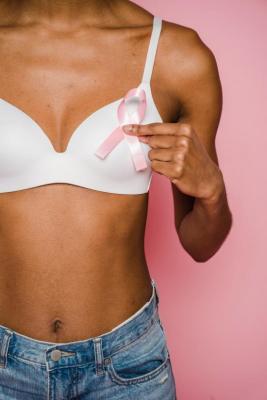Breast Self-Exam
Breast self-exam, or regularly examining your breasts on your own, can be an important way to find a breast cancer early, when it’s more likely to be treated successfully. While no single test can detect all breast cancers early, Breastcancer.org believes that performing breast self-exam in combination with other screening methods can increase the odds of early detection.
Over the years, there has been some debate over just how valuable breast self-examination is in detecting breast cancer early and increasing the likelihood of survival. For example, a 2008 study of nearly 400,000 women in Russia and China reported that breast self-examination does not have a meaningful impact on breast cancer survival rates and may even cause harm by prompting unnecessary biopsies (removal and examination of suspicious tissue). Because of the ongoing uncertainty raised by this and other studies, the American Cancer Society no longer recommends breast self-exam as a screening tool for women with an average risk of breast cancer.
Breastcancer.org still believes that breast self-examination is a useful and important screening tool, especially when used in combination with regular physical exams by a doctor, mammography, and in some cases ultrasound and/or MRI. Each of these screening tools works in a different way and has strengths and weaknesses. Breast self-exam is a convenient, no-cost tool that you can use on a regular basis and at any age. We recommend that all women routinely perform breast self-exams as part of their overall breast cancer screening strategy.
How to do a breast self-exam: The five steps
|
Step 1: Begin by looking at your breasts in the mirror with your shoulders straight and your arms on your hips. Here's what you should look for:
If you see any of the following changes, bring them to your doctor's attention:
|
|
|
Step 2: Now, raise your arms and look for the same changes. Step 3: While you're at the mirror, look for any signs of fluid coming out of one or both nipples (this could be a watery, milky, or yellow fluid or blood). |
|
|
Step 4: Next, feel your breasts while lying down, using your right hand to feel your left breast and then your left hand to feel your right breast. Use a firm, smooth touch with the first few finger pads of your hand, keeping the fingers flat and together. Use a circular motion, about the size of a quarter. Cover the entire breast from top to bottom, side to side — from your collarbone to the top of your abdomen, and from your armpit to your cleavage. Follow a pattern to be sure that you cover the whole breast. You can begin at the nipple, moving in larger and larger circles until you reach the outer edge of the breast. You can also move your fingers up and down vertically, in rows, as if you were mowing a lawn. This up-and-down approach seems to work best for most women. Be sure to feel all the tissue from the front to the back of your breasts: for the skin and tissue just beneath, use light pressure; use medium pressure for tissue in the middle of your breasts; use firm pressure for the deep tissue in the back. When you've reached the deep tissue, you should be able to feel down to your ribcage. |
|
|
Step 5: Finally, feel your breasts while you are standing or sitting. Many women find that the easiest way to feel their breasts is when their skin is wet and slippery, so they like to do this step in the shower. Cover your entire breast, using the same hand movements described in step 4. |
What to do if you find a lump
Don’t panic if you think you feel a lump in your breast. Most women have some lumps or lumpy areas in their breasts all the time, and most breast lumps turn out to be benign (not cancer). There are a number of possible causes of non-cancerous breast lumps, including normal hormonal changes, a benign breast condition, or an injury.
Don’t hesitate to call your doctor if you’ve noticed a lump or other breast change that is new and worrisome. This is especially true for changes that last more than one full menstrual cycle or seem to get bigger or more prominent in some way. If you menstruate, you may want to wait until after your period to see if the lump or other breast change disappears on its own before calling your doctor. The best healthcare provider to call would be one who knows you and has done a breast exam on you before — for example, your gynecologist, primary care doctor, or a nurse practitioner who works with your gynecologist or primary care doctor.
Know what to expect. At an appointment to evaluate a breast lump, your doctor will take a health history and do a physical exam of the breast, and will most likely order breast imaging tests. Ultrasound is often the first or only imaging test used to evaluate a lump in women who are under age 30 or are pregnant or breastfeeding. Both an ultrasound and a mammogram are typically recommended to evaluate a lump in women who are over age 30 and not pregnant or breastfeeding. If further testing is needed, your doctor may recommend additional imaging with MRI (magnetic resonance imaging), MBI (molecular breast imaging), and/or a biopsy. He or she may also refer you to a breast specialist (typically, a breast surgeon) for further evaluation.
Make sure you get answers. It’s important that your doctor gives you an explanation of the cause of the lump or other breast change and, if necessary, a plan for monitoring it or treating it. If you’re not comfortable with the advice of the first doctor you see, don’t hesitate to get a second opinion.





















